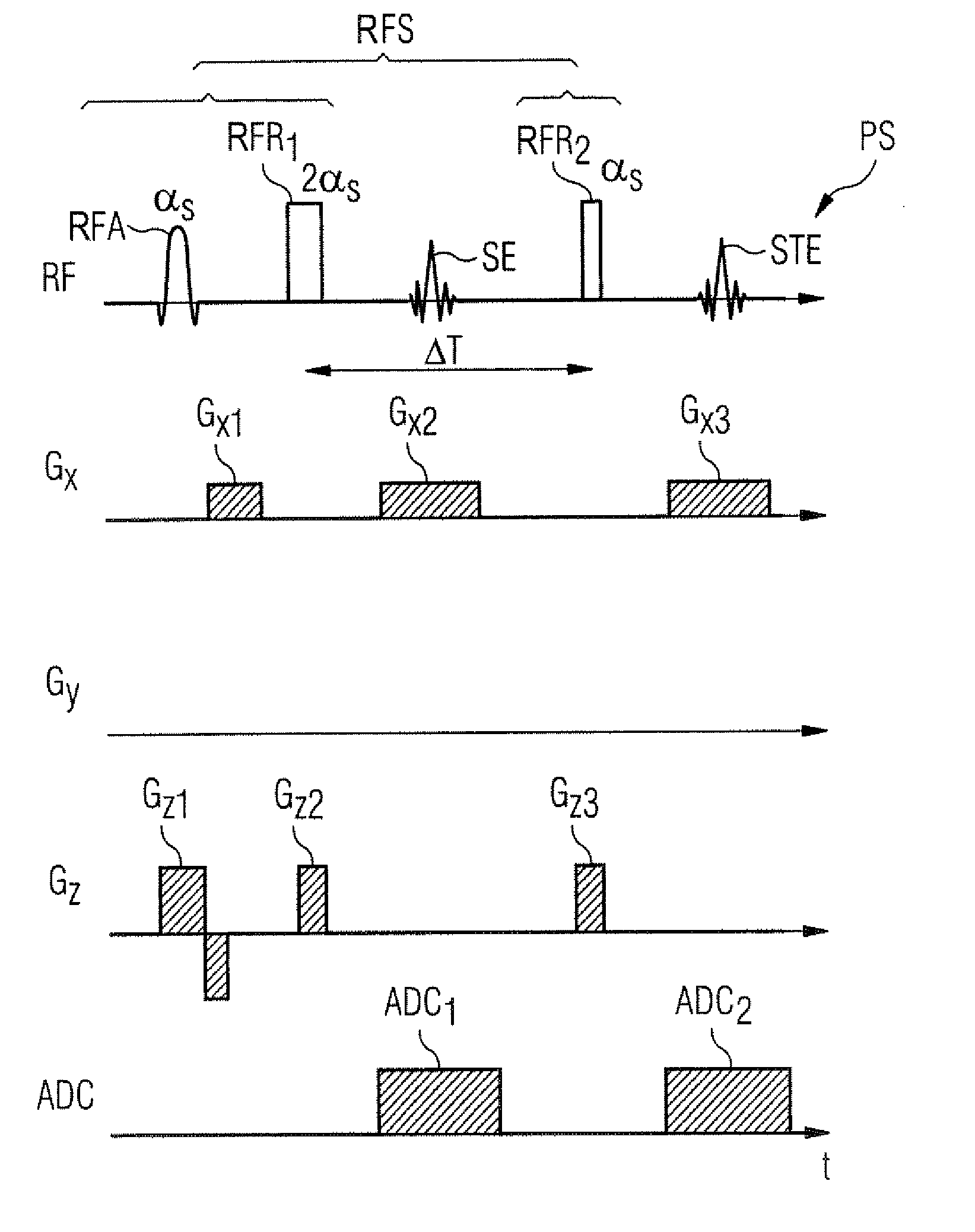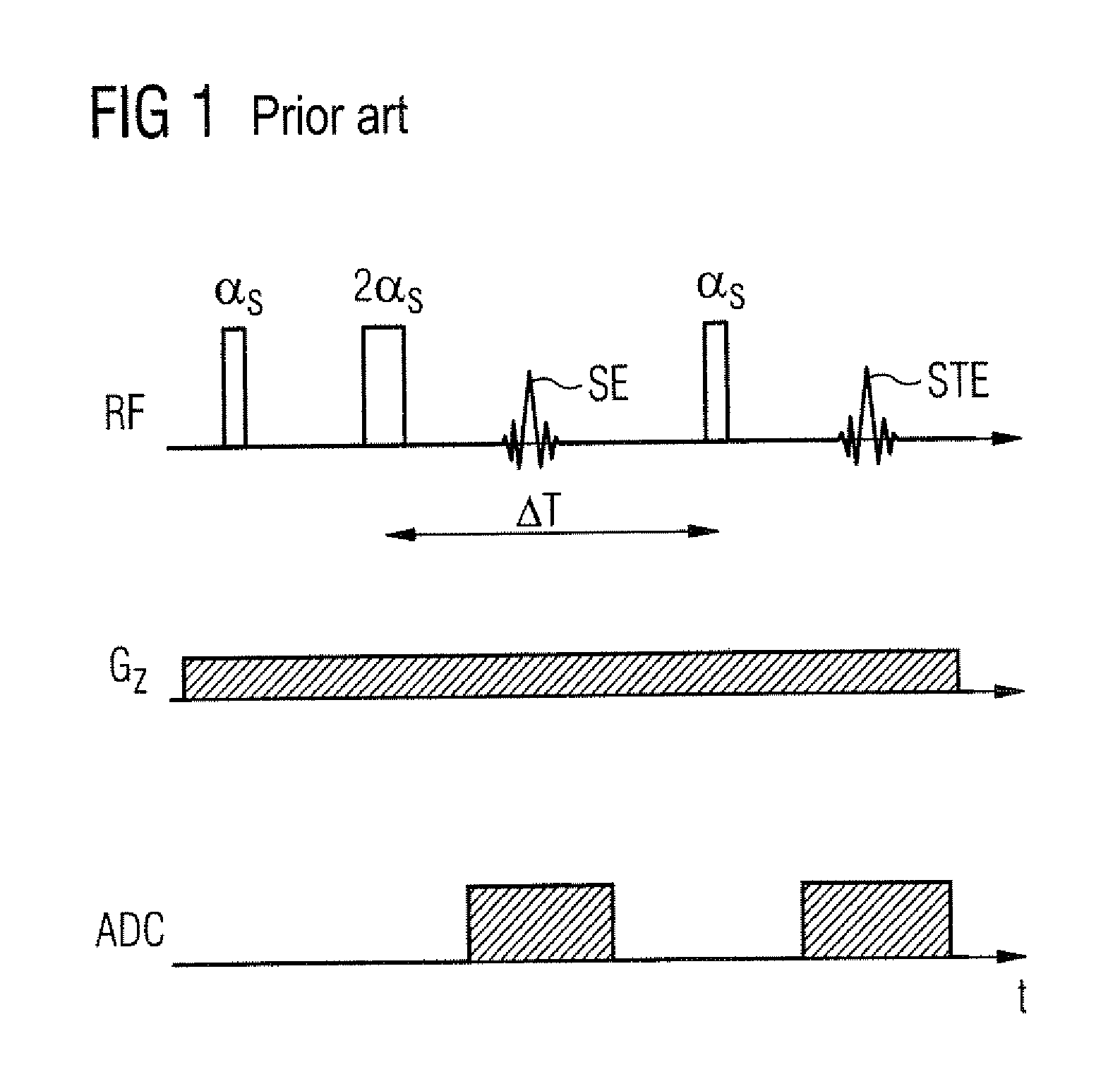Method and magnetic resonance system for adjustment of the field strength of RF pulses
a magnetic resonance system and field strength technology, applied in the field of methods for adjusting the field strength of radiofrequency pulses, can solve the problems of inability to assume, weak spatial dependency, and ambiguity in pulse calibration
- Summary
- Abstract
- Description
- Claims
- Application Information
AI Technical Summary
Benefits of technology
Problems solved by technology
Method used
Image
Examples
Embodiment Construction
[0051] In the pulse sequence scheme shown in FIG. 1, the pulses emitted by the radio-frequency transmission antenna and the gradients appropriately switched in temporal dependence on the radio-frequency pulses are shown in a typical manner on parallel time axes (i.e. over time t).
[0052] The scheme shown in FIG. 1 is a typical scheme already explained above in order to determine an average flip angle within a slice volume according to the conventional manner. The radio-frequency pulses emitted by the radio-frequency transmission antenna are plotted on the uppermost axis designated with RF (radio-frequency). The gradient Gz shown under this is known as the slice-selection gradient, which is typically applied in the z-direction (i.e. in the direction of the basic magnetic field) and allows a selection of a specific slice or of a determined sub-volume upon excitation. The time windows in which a signal is measured with an ADC (analog-digital converter) are shown on the lowermost axis i...
PUM
 Login to View More
Login to View More Abstract
Description
Claims
Application Information
 Login to View More
Login to View More - R&D
- Intellectual Property
- Life Sciences
- Materials
- Tech Scout
- Unparalleled Data Quality
- Higher Quality Content
- 60% Fewer Hallucinations
Browse by: Latest US Patents, China's latest patents, Technical Efficacy Thesaurus, Application Domain, Technology Topic, Popular Technical Reports.
© 2025 PatSnap. All rights reserved.Legal|Privacy policy|Modern Slavery Act Transparency Statement|Sitemap|About US| Contact US: help@patsnap.com



